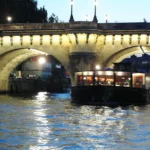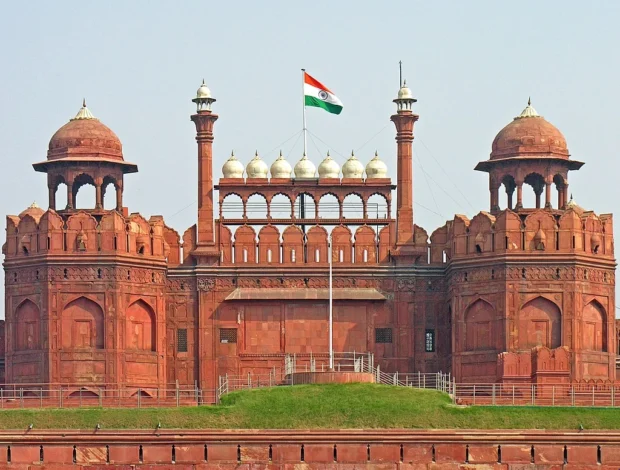Walking through Delhi, a city where centuries overlap like threads in a rich tapestry, the Red Fort stands as a vivid emblem of India’s past and pride. Known locally as Lal Qila, this vast fortress captures the essence of Mughal splendor and colonial intrigue. For anyone drawn to historical architecture, cultural storytelling, or simply the vibrant pulse of urban heritage, the Red Fort offers a gateway into the stories that shaped Delhi and beyond.
Table of Contents
Arriving at the Red Fort: Gateway to the Past
Located in the heart of Old Delhi, the Red Fort is easily accessible by various means of transport. From Connaught Place, the bustling commercial hub of Delhi’s city center, take the Metro’s Yellow Line heading towards Kashmiri Gate and alight at the Chandni Chowk station. The fort is a short walk from there, allowing you to step right into the labyrinthine lanes that echo with centuries of market culture.
For a broader view of Delhi’s rich culture and daily life, take a moment to visit the guide to experiencing Delhi’s history, food, and neighborhoods.
For visitors arriving from Indira Gandhi International Airport, a taxi or ride-share service is advisable, usually taking around 45 minutes depending on traffic. The nearest railway station, New Delhi Railway Station, is approximately 6 kilometers away, with auto-rickshaws and buses offering convenient links.
Nearby accommodations range from charming guesthouses nestled in heritage neighborhoods to larger hotels offering modern comforts, all within a radius that keeps you close to the fort’s vibrant surroundings. Exploring the nearby streets reveals a treasure trove of culinary heritage-street vendors serve piping hot kachoris and jalebis, while traditional sweet shops invite you to sample Delhi’s famed desserts.
Red Fort’s Tale: More Than Just Red Walls
The Red Fort’s story begins in 1638 when Emperor Shah Jahan chose this site to build his new palace complex, a jewel of Mughal architecture. Constructed using striking red sandstone, the fort’s walls were meant not only for defense but also as a canvas for imperial artistry. The layout reflects Persian influences and Islamic architectural elegance, fused with Indian craft traditions.
As you wander beneath the majestic Lahori Gate, imagine the processions and pageantry that filled the fort’s courtyards. The delicate filigree of marble balconies and the serene Charbagh gardens hint at a lifestyle where power and poetry intertwined. The fort witnessed critical events, including the British colonial takeover and its role in India’s independence movement, culminating in the historic flag-hoisting by Jawaharlal Nehru in 1947.
Architectural Features and Hidden Details
Inside the fort, the Diwan-i-Aam (Hall of Public Audience) and Diwan-i-Khas (Hall of Private Audience) showcase contrasting spaces of governance and intimacy. Don’t miss the Hammam, a bathhouse with intricate water channels, reflecting the Mughal mastery of combining utility with beauty. A lesser-known fact is the fort’s strategic use of water from the Yamuna River, which enhanced its defense and elegance simultaneously.
Planning Your Visit: When and How
Choosing the right time to visit the Red Fort enhances your experience considerably. Early morning visits during the cooler months from October to March offer a serene atmosphere to absorb the fort’s history before the crowds swell. Weekdays are particularly peaceful compared to weekends and public holidays when the fort becomes a focal point for local families and tourists alike.
If your interest in grand forts and palatial history continues, wander through the Forbidden City’s ancient courtyards and stories to see another imperial treasure.
After visiting the Red Fort, you might appreciate the nearby Qutub Minar, another iconic monument that showcases Delhi’s rich history through remarkable architecture.
The fort opens daily from 9:30 AM to 4:30 PM, with last admissions at 4:00 PM. Entry fees are modest and vary slightly for foreign and Indian visitors, with concessions for children and seniors. Booking tickets online ahead of your visit saves time and guarantees entry, especially during peak tourist seasons.
Guided Tours and Reservation Information
While self-guided exploration is rewarding, joining a guided tour enriches your journey with detailed narratives about each structure’s significance and the fort’s multifaceted legacy. Several local guides offer hour-long tours, weaving anecdotes about social hubs, festivals once hosted within these walls, and artisans whose crafts survived the centuries.
Official ticketing and tour information can be found on the Archaeological Survey of India’s site, which manages the monument. For your convenience, visit the Archaeological Survey of India homepage for bookings and updates.
Tasting History Nearby: Flavors Around the Red Fort
After soaking in history, step outside to experience the sensory delights of Old Delhi’s culinary scene. Chandni Chowk’s narrow lanes are a paradise for street food aficionados. Here, you can savor delicacies like chaat, spicy kebabs, and the famous parathas served at historic eateries.
For a quieter moment, numerous old cafés offer aromatic chai paired with local sweets, allowing a glimpse into Delhi’s coffee traditions and community spaces where artists, writers, and locals mingle. The blend of rich aromas and lively chatter creates an atmosphere that complements the fort’s enduring spirit.
Stories Beyond Stone: Festivals and Cultural Events
The Red Fort is not just a static relic; it remains a living stage for India’s cultural narrative. The fort hosts spectacular light and sound shows in the evenings, retelling Mughal history with dramatic flair. National celebrations like Independence Day see the fort adorned with vibrant lights and patriotic fervor, drawing crowds who unite in remembrance and hope.
Seasonal festivals around the fort, including traditional crafts fairs and music performances, invite visitors to witness the continuity of heritage neighborhoods and artisanal food culture thriving amid modernity.
Final Thoughts: The Red Fort’s Enduring Allure
Visiting the Red Fort transcends a mere sightseeing stop; it is an invitation to immerse oneself in layers of history, artistry, and lively urban culture. From the fort’s formidable ramparts to the bustling markets surrounding it, every corner tells a story waiting to be heard, tasted, and felt.
Whether you are drawn by its architectural grandeur or the vibrant market culture, the Red Fort stands as a vibrant heart of Delhi’s rich past and dynamic present-a must-experience landmark for every traveler intrigued by the soul of India.

Lover of cities, local cafés, and historic streets, exploring urban life with attention to architecture and culinary delights.
- India-0037 – Flickr – archer10 (Dennis) by Dennis G. Jarvis on Wikimedia Commons – cc by-sa 2.0
